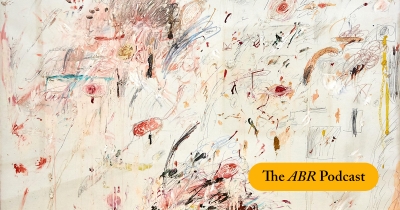Accessibility Tools
- Content scaling 100%
- Font size 100%
- Line height 100%
- Letter spacing 100%
Patrick McCaughey
The ABR Podcast
Released every Thursday, the ABR podcast features our finest reviews, poetry, fiction, interviews, and commentary.
Subscribe via iTunes, Stitcher, Google, or Spotify, or search for ‘The ABR Podcast’ on your favourite podcast app.
2025 Peter Porter Poetry Prize Shortlist
Read by the poets
This week on The ABR Podcast we feature the 2025 Peter Porter Prize shortlisted poems, as read by the five poets, published in the January-February issue of ABR.
Recent episodes:
We heard the news in the Giardino. Our party had agreed to meet at the American pavilion. James Rondeau of the Art Institute of Chicago, co-curator of the Robert Gober exhibit, was going to take us through the show. As the various members made their way through the 49th Venice Biennale to the rendezvous, we learned that the World Trade Centre towers had been hit and that the Pentagon was on fire. Behind us, the American pavilion was quietly closed. On the vaporetto back to the hotel, a Belgian businessman was on his cell phone to his secretary in Brussels. He turned and told us that both towers had collapsed.
... (read more)Peter Booth: Human/Nature by Jason Smith (with contributions from John Embling and Robert Lindsay)
A Life of Picasso: The minotaur years, 1933–1943 by John Richardson
Cy Twombly: Making past present edited by Christine Kondoleon with Kate Nesin
This week our subject is Cy Twombly, one of the most celebrated artists of the twentieth century. A new major exhibition of his work, Cy Twombly: Making Past Present, organised by the MFA in Boston and the Getty Museum in LA, surveys Twombly's immense debt to antiquity. Patrick McCaughey reviews the related catalogue for our upcoming April issue. In this wide-ranging conversation with Peter Rose, he also talks about the plight of US museums during the pandemic, the vexed question of de-accessioning, and the diaries of Fred Williams, which he is currently editing.
... (read more)TarraWarra Museum of Art’s (TWMA) summer exhibition Assembled: The Art of Robert Klippel can only reinforce his reputation as Australia’s foremost modern sculptor. Yet he lacks the public reputation of his contemporary painters – John Olsen, Fred Williams, John Brack, and so on. Klippel (1920–2001) is known largely, if not exclusively, to the world of art. This exhibition may right that historic injustice. Thoughtfully curated by Kirsty Grant, it brought the three basic streams of his art – the drawings, the metal sculpture, and the monumental wood works of his final phase – into a crisp and clear narrative.
... (read more)To celebrate the year’s memorable plays, films, television, music, operas, dance, and exhibitions, we invited a number of arts professionals and critics to nominate their favourites.
... (read more)Five years ago, the J. Paul Getty Museum acquired Édouard Manet’s Jeanne (Spring), 1882, for US$61 million – a record for the artist. It was a bold acquisition, for later Manet – he died in 1883 – has never enjoyed the critical esteem of the earlier. Absurdly so, if you recall that the incomparable Bar at the Folies Bergère ...
... (read more)Man in the Glass House: Philip Johnson, architect of the modern century by Mark Lamster
A shift in the European mind is taking hold. The stable democracies of Germany and the Netherlands contrast sharply with an unstable France and a demagogic Italy. The northern tier has an increasing authority, politically and culturally. Art historically, the Amsterdam–Berlin axis challenges the hegemony of the Paris–Rome accord ...
... (read more)









